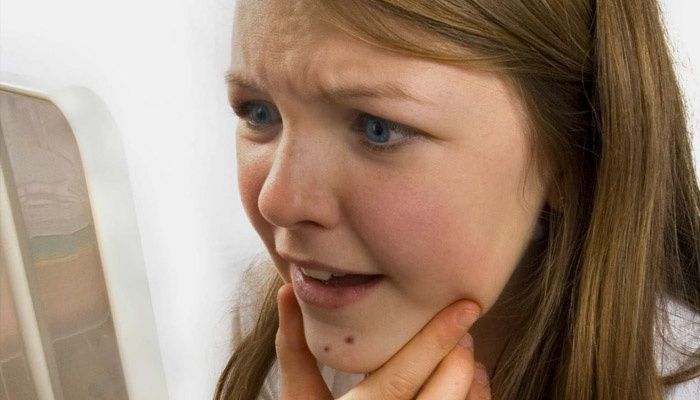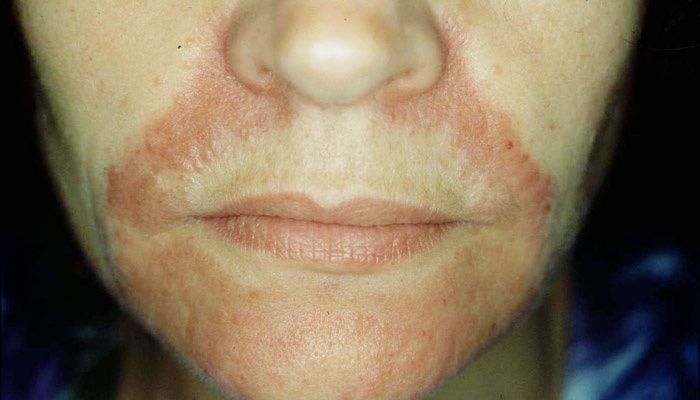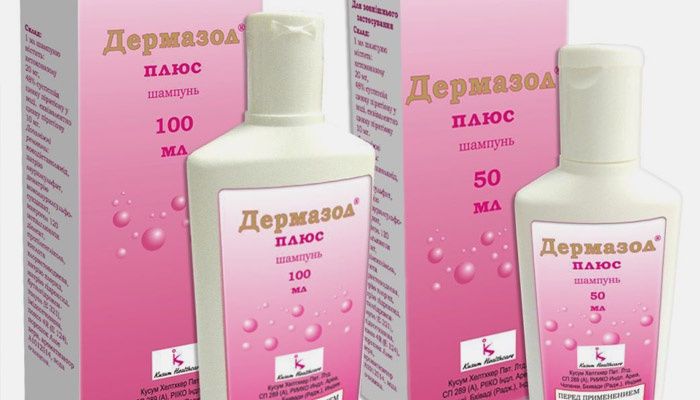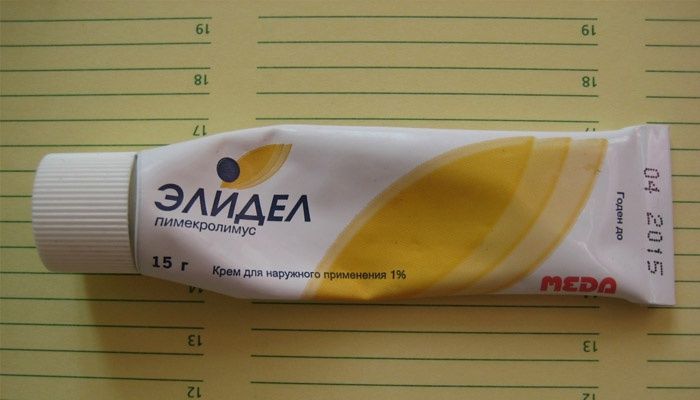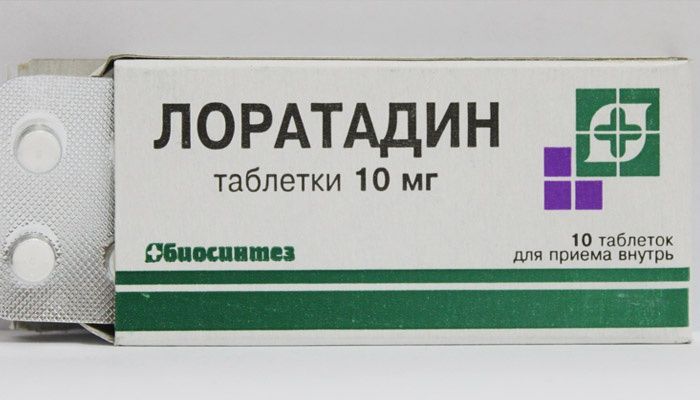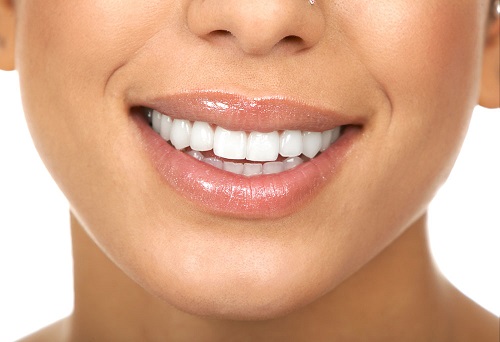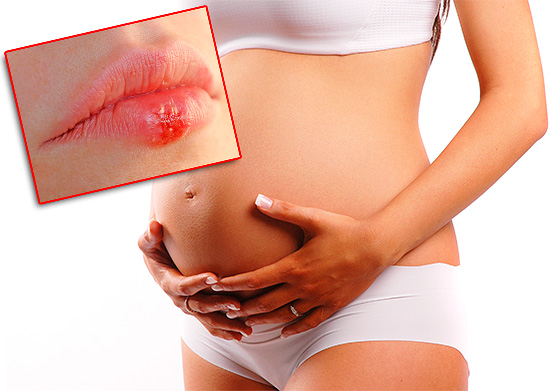Content
Inflammatory skin diseases have a very different nature, but one of the causative agents of the pathological process is the saprophytic flora fungus. He lives on the skin of everyone, but under favorable conditions for reproduction causes seborrheic dermatitis on the face. What to do in this case, because the appearance is so important for a person? The instructions below will help you figure out how to get rid of seborrhea in children and adults..
What is seborrheic dermatitis
The term “dermatitis” means inflammation of the skin due to the influence of provoking factors, such as chemical or mechanical irritants. In addition, substances of plant or animal origin may be the cause. Seborrheic dermatitis of the skin of the face is not contagious. It is associated directly with sebum, the production of which increases due to improper functioning of the glands.
Symptoms of Seborrheic Eczema
With seborrheic dermatitis, fungal bacteria, once in the sebaceous glands on the skin, lead to inflammation, and their decomposition products further aggravate the situation. Clogging of pores often becomes a complication of the disease, which leads to the appearance of acne and purulent formations. The areas of eyebrows, forehead, wings of the nose, cheekbones and behind the ears are affected. In addition, the following signs of seborrheic dermatitis on the face are noted:
- a sensation of itching, which intensifies with the release of sweat;
- redness and irritation of the skin;
- exfoliation of white or yellow flakes;
- soreness and sensitivity of the skin of the face;
- blackheads.
Causes
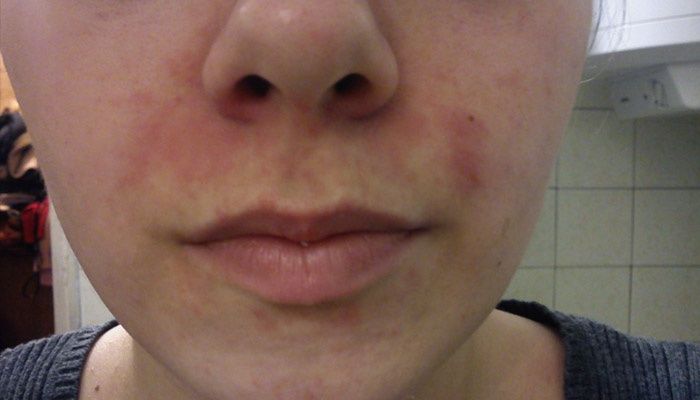
A distinctive feature of seborrheic dermatitis is that medicine cannot reliably name the causes of damage to the facial skin. The following precisely studied factors stand out:
- Heredity. The function of the sebaceous glands of the skin of the face is recorded in the genetic code, so seborrheic dermatitis is familial in nature and often appears in relatives.
- Disruption of the hormonal background. The enhanced synthesis of male androgen hormones androgens in the body is a stimulator of increased production of sebum. This explains why men suffer from the disease more often. Women become infected with seborrheic dermatitis when the amount of female hormones such as estrogen decreases.
- Diseases of an infectious or non-infectious nature. Among the ailments that cause seborrheic dermatitis of the skin of the face, there are tumors, epilepsy, diabetes mellitus, stress and overwork.
What does the fungus look like on the face
The main manifestation of seborrheic dermatitis is peeling, clearly visible on the skin of the face. For this reason, the disease is often confused with psoriasis, but knowing the differences in these ailments makes it easy to separate them. For seborrheic dermatitis of the facial skin are characteristic:
- Clear boundaries of lesions.
- Lack of sites without scales.
- The color of the scales is yellow, and the appearance is greasy.
- Psoriasis is different in the following:
- Skin lesions have uneven borders.
- Marked areas where the skin does not peel.
- The scales are dry and have a silver tint.
Fat Seborrhea
Seborrheic dermatitis on the skin of the face is manifested primarily by enlarged pores. In addition, the color of the epidermis changes, it becomes like a peel of an orange, and thickens. The face acquires an unnatural shine, glossy. Joining seborrheic dermatitis infection on the skin is expressed in acne, black spots, or comedones. If the infection spreads to the scalp, then the strands quickly become oily, stick together and glisten.
Dry seborrhea
Dry seborrheic dermatitis often develops due to disorders of the immune system, high physical or emotional stress and stress. This form of skin infection leads to disruptions in the natural process of exfoliating cells. Outwardly, this manifests itself as enhanced peeling of the epidermis. Scales in this case change their color from white to yellowish. This effect is often manifested on eyelashes and eyebrows..
Treatment of seborrheic dermatitis
As for any disease, therapy is first aimed at eliminating the factor provoking seborrheic dermatitis. If the cause lies in other ailments, you must first cure them, otherwise you can eliminate only the symptoms of seborrhea, but it will soon return again. Seborrheic dermatitis of the skin of the face requires consultation with a dermatologist and endocrinologist. In addition, examinations of a gastroenterologist, neuropathologist and andrologist or gynecologist are not excluded..
Drugs
For a more effective treatment with seborrheic dermatitis of the skin of the face, you need to follow a few simple rules:
- Eliminate aggressive facial care products.
- Among the skin cleansing products, choose gels and milk with anti-inflammatory and antifungal effects. These components include salicylic acid, tea tree oil, lithium salts, ketoconazole.
- Limit the application of skin products containing alcohol.
Ointments and cream
Among external agents, the following hormonal, immunostimulating or antifungal ointments for the face are used:
- “Elidel.” It belongs to the group of immunostimulants. Indicated for short-term or long-term treatment of eczema in an adult or infant. Only in newborns, the fungus of the face can be treated with this remedy no earlier than they turn 3 months old. It is necessary to distribute a thin layer on the damaged areas up to 2 times daily. Then rub with careful movements until completely absorbed..
- “Elokom.” Ointment for seborrheic dermatitis from the group of hormonal agents. It is indicated for inflammation and pruritus with dermatoses. The agent is applied in a thin layer to the damaged areas only 1 time per day..
- “Nizoral.” Cream belonging to the group of antifungal. Indications are dermatomycosis, seborrheic dermatitis, skin candidiasis. It is necessary to apply, depending on the area of damage, 1 or 2 times a day.
Pills
Among the tablets by the method of exposure, several groups of drugs are distinguished. The first are antibacterial drugs, for example, Doxycycline. It can be taken by both adults and children from 12 years old. The dosage for them is 200 mg on the first day, divided into 2 doses. In the following days, you need to reduce it to 100 mg. There are several more effective drugs:
- “Loratadine.” An antihistamine in the form of tablets or syrup, which is convenient for children. It has an antipruritic effect with seborrheic dermatitis. For adults and children from 12 years old, the daily dose is 10 mg, with a single dose. A child from 2 to 12 years old should reduce this amount to half. The price of tablets is from 15 r.
- “Multitabs.” Vitamins for seborrheic dermatitis. Shown to replenish the supply of minerals and trace elements. These include vitamins A, B, D, and E. Take 1 tablet daily. The dose is designed for adults and children from 4 years. Price from 600 r.
Folk remedies
Informal medicine recipes offer different ways to combat seborrheic dermatitis:
- Honey and water. Combine the components in a ratio of 1 to 9. With a ready-made solution, wipe the affected areas of the skin, gently massaging it. Rinse off any remaining product after only a few hours.
- Decoction of oak bark. About half an hour, boil a mixture of ground bark and water, taken in a ratio of 1: 5. In the finished broth, stir 1 tsp. honey. Wipe damaged areas, washing off the rest of the product after 2-3 hours.
- Infusion based on the collection of herbs. In equal parts, take calendula flowers, chamomile and plantain leaves (1 tbsp. Per glass of boiling water). Pour into a thermos and leave overnight. Treat dermatitis affected areas of the face in the morning and evening after washing.
Diet for seborrheic dermatitis
Dietary nutrition for the treatment of seborrheic dermatitis of the skin of the face involves the exclusion of provoking factors from the diet, such as:
- citrus;
- mushrooms;
- caviar;
- confectionery;
- pasta;
- semolina;
- potatoes;
- Strawberry Raspberry;
- fish and seafood with allergies to them;
- fast food;
- pickled and smoked products;
- drinks – coffee, tomato juice, soda, alcohol.
The correct diet for seborrheic dermatitis includes:
- Vegetables – cabbage, carrots, zucchini, pumpkin, beets.
- Fruits – apricots, apples, pears.
- Groats – oat, buckwheat, pearl barley.
- Egg yolks.
- Meat – chicken, goose, liver, lungs, tongue, heart.
- Treatment Reviews
Tatiana, 35 years old: I constantly struggle with seborrheic dermatitis, but as soon as I stop applying cream, the symptoms immediately return. A few weeks ago, she began to add tea tree oil to her cleanser and shampoo so as not to spread the disease on her scalp. It helped!
Alexander, 43 years old: From ointments and creams, the pores are clogged even more, so I use pills. It copes with itching with seborrheic dermatitis “Loratadin”. In addition, I periodically drink vitamins for the overall strengthening of the body. The main thing is not to leave yourself without attention, but to be treated in a timely manner, then the symptoms of seborrheic dermatitis on the skin will no longer appear.
Similar articles
- Atopic dermatitis in children – treatment with folk remedies and medications. Causes and symptoms of atopic dermatitis in a child, video and photo
- Adenovirus infection in children and adults – causes. Symptoms, treatment and prevention of adenovirus infection
- Dyslexia – what is it in children. Causes, correction and treatment of dyslexia with speech therapist exercises






